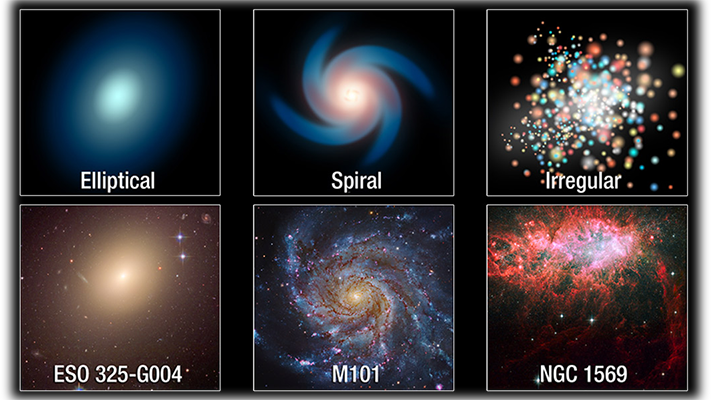Galaxies are some of the most fascinating objects in the universe. They are collections of billions of stars, gas, and dust that are held together by gravity. The Milky Way, our home galaxy, is just one of billions of galaxies in the universe. In this article, we will explore what galaxies are, how they form, and some of the different types of galaxies that exist.
What are Galaxies?
Galaxies are large-scale structures in the universe that contain billions of stars, as well as gas, dust, and other materials. They come in different shapes and sizes, ranging from elliptical galaxies that are shaped like footballs to spiral galaxies that have a distinct spiral structure. Galaxies can be thought of as cosmic islands in space, with each one containing its own unique population of stars and other objects.
How do Galaxies Form?
Galaxies are thought to have formed from the remnants of the Big Bang, which is the event that created the universe as we know it. Shortly after the Big Bang, the universe was a hot, dense soup of subatomic particles. As the universe cooled, these particles began to clump together, eventually forming the first galaxies.
Over time, galaxies grew larger and more complex through a process called accretion. This is where galaxies pull in gas and dust from their surroundings, which allows them to form new stars and other objects. As galaxies continued to accrete matter, they also began to merge with one another. This process led to the formation of larger galaxies, including the giant elliptical galaxies that we see today.
Types of Galaxies
There are several different types of galaxies, each with its own unique characteristics. Here are some of the most common types of galaxies:
- Spiral Galaxies: These galaxies have a distinct spiral structure, with a central bulge surrounded by several arms that spiral outward. Our own Milky Way galaxy is a spiral galaxy.
- Elliptical Galaxies: These galaxies are shaped like footballs or ellipsoids and contain mostly old stars. They are the most common type of galaxy in the universe.
- Irregular Galaxies: These galaxies have no distinct shape and contain young stars and gas.
- Lenticular Galaxies: These galaxies have a disk-like structure, like a spiral galaxy, but no spiral arms. They contain mostly old stars and very little gas.
- Dwarf Galaxies: These galaxies are much smaller than other types of galaxies and contain fewer stars. They are thought to be the building blocks of larger galaxies.
Conclusion
Galaxies are some of the most fascinating objects in the universe. They are collections of billions of stars, gas, and dust that are held together by gravity. Galaxies come in different shapes and sizes, and each one contains its own unique population of stars and other objects. The study of galaxies is an important part of astronomy, as it allows us to learn more about the history and evolution of the universe.
![]()





